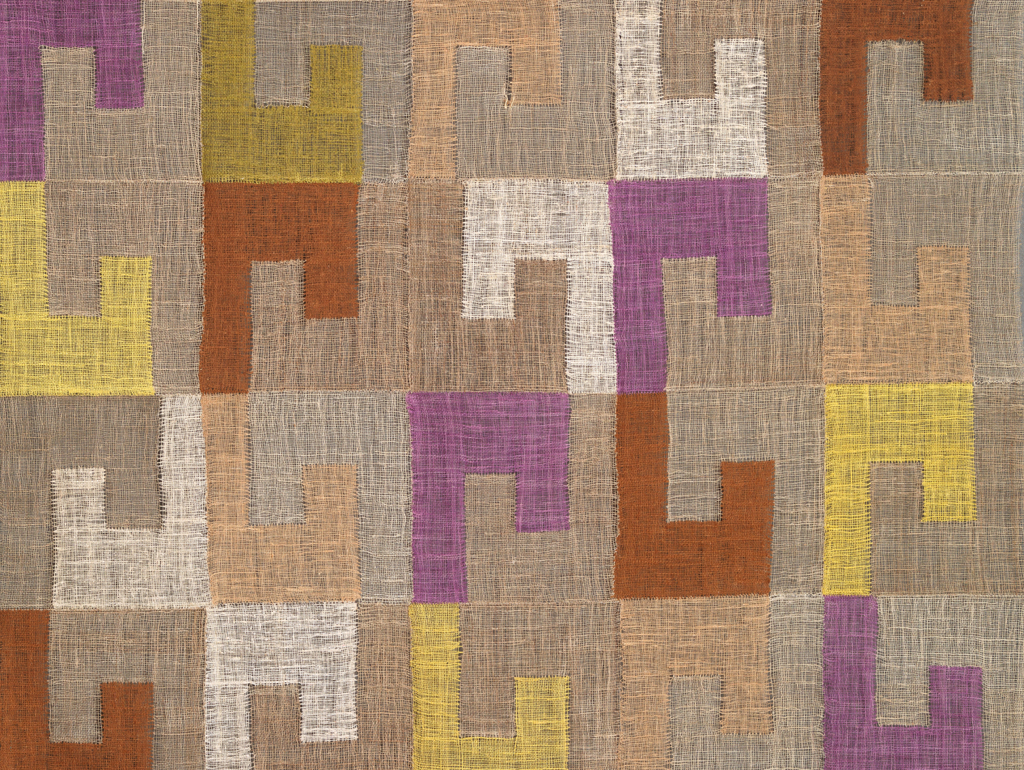MEDIA CONTACTS:
Amelia Thompson: [email protected], 202-994-6460
Maralee Csellar: [email protected], 202-994-6460
WASHINGTON (Oct. 11, 2018)—The George Washington University announced today it will receive a $18.4 million gift combining more than 4,000 textiles and an endowment and equipment to support the textile collections assembled by the late Lloyd Cotsen, former chief executive officer and chairman of the board of Neutrogena Corporation. The collections include textiles from nearly every era and every region in the world including Asia, the Middle East, Africa, Europe and the Americas. The collections will be accessible for scholarly research and will influence future educational opportunities at the George Washington University Museum and The Textile Museum.
The heart of the gift, from the Cotsen 1985 Trust, is the Cotsen Textile Traces Study Collection, which is one of the world’s most significant textile study collections ever assembled by an individual. The collection includes historical and contemporary textile fragments representing cultures around the globe and dating from antiquity to the present. Items from the collection have been featured in dozens of exhibitions, research studies and publications.
Along with the collection, the gift includes the creation of a dedicated space in the museum to be called the Cotsen Textile Traces Study Center. The study center and state-of-the-art equipment will enable scholars and students to research these fragile textiles.
“The mission of the museum at the George Washington University aligns perfectly with Lloyd’s vision to inspire interdisciplinary research and scholarship that focuses on textiles,” said Margit Sperling Cotsen, Lloyd Cotsen’s widow, who is a trustee of the Cotsen 1985 Trust and chair and founding director of the Cotsen Foundation for the Art of Teaching. “The Cotsen Textile Traces Study Center, consisting of this important collection together with robust programming, has great potential to become the informational hub or ‘switchboard’ for textile research and publication in the United States.”
In addition to the Cotsen Textile Traces Study Collection, the Cotsen 1985 Trust also gifted 137 larger textiles. Some of the most significant pieces include pre-Columbian garments from Peru, rugs from China and Anatolia, Greek embroidery, and works by international contemporary artists.
“Lloyd Cotsen would deeply appreciate knowing that his collections will be accessible to the academic world at a university committed to research, scholarship and publication,” said Barry Munitz, president and CEO of the Cotsen Foundation for the Art of Teaching and retired president of the J. Paul Getty Trust. “By collaborating with the George Washington University and The Textile Museum, his aspirations for scholarly engagement related to these textiles will be realized in ways that even Lloyd could only have dreamed were possible.”
“We are grateful to Margit Sperling Cotsen and the trust for their gift of these magnificent collections and the establishment of an endowment to support them,” GW president Thomas LeBlanc said. “The collection enhances the university’s continuing commitment to advancing research, education and cultural understanding across all disciplines.”
In addition to donating the collections, the trust will provide an accompanying Cotsen Textile Traces Study Collection Endowment to support the development and coordination of programs at the museum that emphasize research, scholarly projects and professional outreach related to the Cotsen Textile Traces Study Collection. Support provided by the endowment will also fund conferences, visiting scholar lectures, research and publications.
“The Cotsen Textile Traces Study Collection is the finest resource ever assembled for teaching the aesthetic and cultural significance of global textiles,” said Museum Director John Wetenhall. “Since affiliating with GW in 2012, The Textile Museum relaunched its scholarly journal and integrated students into its core operations. This gift further elevates our museum and university as an international destination for students and scholars alike and strengthens the museum’s commitment to education, research and training the next generation of textile scholars and museum professionals.”
A passionate art collector and philanthropist, Lloyd Cotsen admired lesser-known art forms and was fascinated with texture and structure. He acquired objects from around the world, subsequently donating them to various institutions and art museums. He was known for obtaining items that appealed to his curiosity including children’s books, Chinese mirrors, Japanese bamboo baskets and a vast assortment of textiles. He used his creative thinking as an employee at his father-in-law’s cosmetics company to get a new kind of soap in the hands of Americans by giving samples to dermatologists for their patients and persuading hotels to carry the line for guests. His out-of-the-box approach led Neutrogena to become a worldwide brand. Neutrogena is now part of Johnson & Johnson.
“Lloyd Cotsen’s business acumen and art leadership were fundamental to the evolution of The Textile Museum during and after his two decades serving as a museum trustee,” Bruce P. Baganz, president of The Textile Museum Board of Trustees, said. “It is an honor for the museum to now incorporate his vision and his Textile Traces Study Collection as a leading resource for textile scholars, artists and connoisseurs.”
The George Washington University Museum and The Textile Museum is home to collections of more than 20,000 textiles from around the world. In addition to its location on the university’s Foggy Bottom Campus, the museum operates a textile conservation laboratory at its Avenir Foundation Conservation and Collections Resource Center in Ashburn, Virginia.
-GW-



